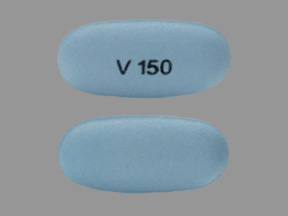Kalydeco Side Effects
Generic name: ivacaftor
Medically reviewed by Drugs.com. Last updated on Oct 8, 2023.
Note: This document provides detailed information about Kalydeco Side Effects associated with ivacaftor. Some dosage forms listed on this page may not apply specifically to the brand name Kalydeco.
Applies to ivacaftor: oral granule, oral tablet.
Serious side effects of Kalydeco
Along with its needed effects, ivacaftor (the active ingredient contained in Kalydeco) may cause some unwanted effects. Although not all of these side effects may occur, if they do occur they may need medical attention.
Check with your doctor immediately if any of the following side effects occur while taking ivacaftor:
More common
Less common
incidence not known
- chest tightness
- difficulty swallowing
- dizziness
- fast heartbeat
- hives, itching, skin rash
- puffiness or swelling of the eyelids or around the eyes, face, lips, or tongue
Other side effects of Kalydeco
Some side effects of ivacaftor may occur that usually do not need medical attention. These side effects may go away during treatment as your body adjusts to the medicine. Also, your health care professional may be able to tell you about ways to prevent or reduce some of these side effects.
Check with your health care professional if any of the following side effects continue or are bothersome or if you have any questions about them:
More common
For healthcare professionals
Applies to ivacaftor: oral granule for reconstitution, oral tablet.
Dermatologic
- Very common (10% or more): Rash (up to 13%)
- Common (1% to 10%): Acne[Ref]
Gastrointestinal
- Very common (10% or more): Oropharyngeal pain (22%), abdominal pain (16%), diarrhea (13%), nausea (12%)[Ref]
Hepatic
- Very common (10% or more): Transaminase elevations (up to 27.8%)
- Common (1% to 10%): Increased aspartate aminotransferase, increased hepatic enzymes, transaminase elevations[Ref]
Maximum transaminase (ALT or AST) levels of greater than 8 times upper limit of normal (ULN), greater than 5 times ULN, and greater than 3 times ULN were reported in 2%, 3%, and 6% of patients treated with ivacaftor, respectively.
In patients aged 12 months to less than 24 months (N=19), the incidence transaminase elevations (ALT or AST) greater than 3, greater than 5, and greater than 8 times the upper limit of normal (x ULN) was 27.8% (5/18), 11.1% (2/18) and 11.1% (2/18), respectively. In patients aged 6 months to less than 12 months (N=11) one patient (9.1%) had elevated ALT of greater than 3 to less than or equal to 5 x ULN. No patients had elevations in total bilirubin, or discontinued ivacaftor treatment due to transaminase elevations.[Ref]
Metabolic
Musculoskeletal
Nervous system
- Very common (10% or more): Headache (24%)
- Common (1% to 10%): Dizziness, sinus headache[Ref]
Other
- Very common (10% or more): Pyrexia (14.7%)
- Common (1% to 10%): Bacteria in sputum, ear discomfort, ear pain, tinnitus, tympanic membrane hyperemia, ear congestion[Ref]
Respiratory
- Very common (10% or more): Upper respiratory tract infection (22%), nasal congestion (20%), nasopharyngitis (15%), cystic fibrosis lung (38.5%), cough (36.7%), productive cough (12.8%), rales (10%)
- Common (1% to 10%): Rhinitis, pharyngeal erythema, pleuritic pain, sinus congestion, wheezing[Ref]
Endocrine
- Common (1% to 10%): Breast mass
- Uncommon (0.1% to 1%): Breast inflammation, gynecomastia, nipple disorder, nipple pain[Ref]
Ocular
- Postmarketing reports: Non-congenital lens opacities/cataracts (in pediatric patients up to 12 years of age)[Ref]
References
1. Cerner Multum, Inc. "UK Summary of Product Characteristics."
2. Cerner Multum, Inc. "Australian Product Information."
3. (2012) "Product Information. Kalydeco (ivacaftor)." Vertex Pharmaceuticals
Frequently asked questions
- How does Kalydeco work?
- What is the difference between Symdeko and Orkambi?
- What is the difference between Symdeko and Kalydeco?
- What is an orphan drug?
More about Kalydeco (ivacaftor)
- Check interactions
- Compare alternatives
- Pricing & coupons
- Reviews (1)
- Drug images
- Dosage information
- During pregnancy
- FDA approval history
- Drug class: CFTR potentiators
- Breastfeeding
Patient resources
Professional resources
Related treatment guides
Further information
Kalydeco side effects can vary depending on the individual. Always consult your healthcare provider to ensure the information displayed on this page applies to your personal circumstances.
Some side effects may not be reported. You may report them to the FDA.

